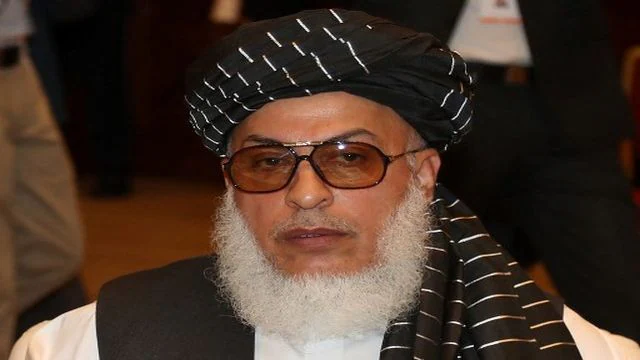Sher Mohammad Abbas Stanikzai, top Taliban leader, once trained at Indian Military Academy
[ad_1]
The now head of the Political Office of Taliban, was known as ‘Sheru’ to his 1982 course mates
Sher Mohammad Abbas Stanikzai, one of the Taliban’s seven most powerful figures, was a cadet at the prestigious Indian Military Academy in Uttarakhand’s Dehradun and his course mates called him ‘Sheru’.
According to a report in the Times of India, Stanikzai was “well-built, not too tall and never religiously inclined”. He was 20-years old when he joined one of the 45 foreign gentlemen cadets of the Bhagat Battalion’s Keren Company at the academy.
So, how did an IMA cadet transform into a Talibani leader?
Early years
Born in 1963 in the Baraki Barak district of Logar province of Afghanistan, Stanikzai is ethnically a Pashtun.
After obtaining his masters’ degree in political science, he later studied at the Indian Military Academy in Dehradun, which in the 1970s was involved in training Afghan army officials.
Major General DA Chaturvedi (retired), his IMA batchmate, was quoted as telling the Times of India, “He was a likeable guy who seemed a little older than the other cadets at the academy. He kept this striking moustache. He certainly had no radical views at the time. He was an average Afghan cadet who seemed to be enjoying his time here.”
Another batch mate, Colonel Kesar Singh Shekhawat (retd) , added that “he was like the kid next door. I remember this one time we went to Rishikesh and bathed in the Ganga. There is a photograph of him in his swimming trunks from a day we had gone to the river in Rishikesh and bathed in the Ganga”.
A third batch mate added that “even if he smoked a cigarette, he would do it away from our attention.”
Taliban years
After serving the Afghan army and fighting the Soviet-Afghan war, in 1996, he left the fighting forces and joined the Taliban.
An old friend, in a New York Times report, said that when he joined the group initially, he didn’t quite fit in well. Furthermore, he would often go out to restaurants in Quetta, Pakistan with his wife, which became a subject of gossip among the fighters.
During the Taliban’s 1996–2001 rule of Afghanistan, Stanakzai served as deputy minister of foreign affairs under foreign minister Wakil Ahmed Muttawakil and later deputy minister of health.
In 1996, Stanikzai travelled to Washington, DC as acting foreign minister to ask the Bill Clinton administration to extend diplomatic recognition to Taliban-ruled Afghanistan.
He became the Taliban’s most important negotiator in the years that followed – his English-speaking skills and military background proved valuable.
However, his fortunes changed around 1998 when he ran afoul of the Taliban leadership, possibly owing to abuse of power and his lax attitude towards alcohol.
But, his connections to Pakistani military intelligence, which wielded power over the Taliban, helped see him back in the midst of events.
After the group established its political office in Doha in 2012, where its senior leaders were stationed, he ran it and led negotiations on the Taliban’s behalf until Abdul Ghani Baradar, co-founder of Taliban and expected to become its new leader, returned in 2019. Stanikzai, however, remains a key negotiator.
He also acted as deputy negotiator for Abdul Hakim Haqqani, head of the Taliban’s negotiating team, on talks with Afghan government officials.
In September 2020, when the Taliban gathered at the table to discuss peace with the Afghan government, Stanikzai was initially appointed to lead the negotiating team, but just days before it was announced that he would serve as a deputy to Abdul Hakim.
Andrew Watkins, a senior Afghan analyst for the International Crisis Group – a Washington-based think tank, had told the Washington Post, “If there’s one word to describe Stanikzai, it’s survivor.”
According to Watkins, Stanikzai has never been a big mover within the movement, but he’s been up there in the shadows of the higher ranks and he’s always managed to retain just enough influence to stay alive and stay active.
At present, Stanikzai is one of the seven most influential men in the organisation – that is attempting to recast themselves in a more moderate mold.
Opportunity for India?
Several of Stanikzai’s IMA batch mates believe that his time at the Dehradun facility could prove to be a trump card for the nation.
They believe that India could use his history and background to sit down at the table and interact with the Taliban.
This would be beneficial to New Delhi as it could secure some sort of assurance that Taliban would not allow territory under its control to be used against India.
It is left to be seen if India does manage a negotiation with the group, as policy dictates negotiations only with legitimate governments. However, if it does, it only stands to benefit India.
– With inputs from agencies
[ad_2]
Source link


Comments are closed.